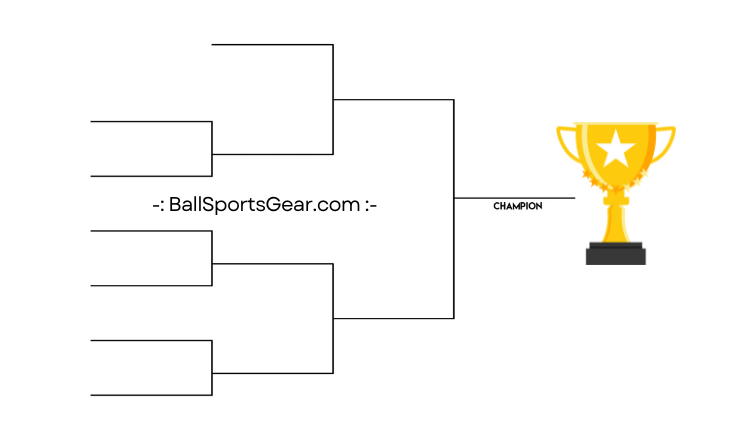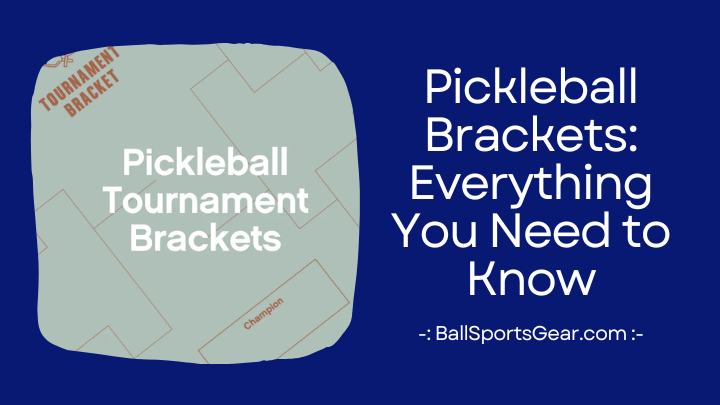Pickleball has taken the world of recreational sports by storm, and with its growing popularity, competitive tournaments have become a common occurrence. Among the various elements that make these tournaments exciting and organized, pickleball brackets tournaments play a crucial role. In this article, we’ll explore what pickleball brackets are, their importance in pickleball brackets tournaments, and the purpose they serve in organizing fair and competitive gameplay.
Pickleball Brackets: What Are They?
Pickleball brackets are a system used to organize tournament matches and determine the progression of players or teams throughout the competition. Brackets serve as visual representations of the tournament’s structure, showcasing match pairings, round progression, and ultimately, the path to victory.
Importance of Pickleball Brackets Tournaments:
Fairness and Equal Competition:
Pickleball brackets ensure fairness by grouping players or teams of similar skill levels together. This helps to create competitive matches and avoids imbalanced pairings, allowing participants to showcase their skills and compete on a level playing field.
Organization and Schedule Management:
Brackets provide a clear schedule of matches, ensuring smooth tournament operations. Players and spectators can easily track their progress, know when and where they will be playing, and plan accordingly. This structured approach helps organizers run the tournament efficiently, minimizing delays and confusion.
Excitement and Spectator Engagement:
Brackets generate anticipation and excitement among both players and spectators. As the tournament progresses, brackets highlight potential matchups between skilled competitors, building up rivalries and increasing the overall intensity and thrill of the event. It also allows spectators to follow their favorite players or teams and cheer them on throughout their journey in the tournament.
Purpose of Organizing Brackets
Seeding and Pairing:
Brackets enable organizers to seed players or teams based on their skill levels or rankings. Seeding ensures that the strongest players do not meet each other in the early rounds, maximizing the competitiveness of the matches. Pairing is done based on the bracket structure, with winners advancing to face each other while losers compete in consolation or lower brackets.
Progression Tracking:
Brackets provide a visual representation of the tournament’s progression, displaying the outcomes of matches and the next opponents for winners and losers. This allows players to track their advancement and understand their path to the championship, maintaining motivation and focus throughout the tournament.
Flexibility and Adaptability:

Organizers can make adjustments to brackets during the tournament if necessary. This includes addressing any no-shows, injuries, or disqualifications, ensuring that the tournament continues smoothly and that all participants have fair opportunities to compete.
Types of Pickleball Brackets
Single Elimination
Description and format:
Single elimination brackets are the most straightforward and commonly used format in pickleball tournament brackets. Participants compete in matches, and if they lose, they are eliminated from the tournament. Winners advance to the next round until only one player or team remains as the champion.
Advantages:
- Simple and easy to understand.
- Efficient in terms of time management for large tournaments.
Disadvantages:
- Offers limited opportunities for players to recover from a single loss.
- Does not guarantee players face opponents of similar skill levels.
Double Elimination
Description and format:
Double elimination brackets provide participants with a second chance by allowing them to compete in both a winner’s bracket and a loser’s bracket. Participants who lose in the winner’s bracket move to the loser’s bracket and continue competing until they are eliminated.
Advantages:
- Provides a fair chance for participants to recover from a single loss.
- Allows for more matches and increased playing time for participants.
Disadvantages:
Can be time-consuming, especially for large tournaments.
May require additional matches and scheduling adjustments.
Round Robin
Description and Format:
The Round Robin bracket system involves organizing players or teams into groups, typically with three to six players per group. Each player/team plays against every other player/team within their group. Matches are usually played until one player/team reaches a certain score or a predetermined time limit is reached. The scores are then recorded, and rankings are determined based on the win-loss records, head-to-head results, and sometimes point differentials.
a) Advantages:
- Maximum playing time: Round Robin ensures that players have ample playing time as everyone competes against each other in their respective groups.
- Fairness and inclusivity: Each player/team has an opportunity to play against every other player/team in their group, eliminating any potential bias in matchups.
- Balanced competition: Round Robin allows players to face opponents of varying skill levels, offering a well-rounded playing experience.
b) Disadvantages:
- Lengthy schedule: Depending on the number of players/teams and the format, Round Robin brackets can become time-consuming, especially in larger tournaments.
- Limited advancement opportunities: In traditional Round Robin formats, only the top performers from each group may advance to the next stage, potentially leaving talented players/teams behind.
Modified Swiss System
Description and Format:
The Modified Swiss system combines elements of both the Round Robin and Swiss systems. Players/teams are initially paired based on their skill levels and rankings. They play a series of matches against opponents with similar rankings, accumulating points based on their wins, losses, and ties. After each round, players/teams are paired with opponents who have similar point totals, promoting fair and balanced matchups.

a) Advantages:
- Fair and competitive matchups: The Modified Swiss system strives to match players/teams of similar skill levels, ensuring more closely contested matches.
- Flexible scheduling: Unlike Round Robin, the Modified Swiss system allows for different numbers of rounds, making it adaptable to tournaments of varying sizes and time constraints.
Continuous play: Players/teams compete in each round, regardless of their initial performance, providing ongoing engagement throughout the tournament.
b) Disadvantages:
- Complexity: The Modified Swiss system may require additional administrative effort to calculate and pair players/teams accurately, which can be challenging in larger tournaments.
- Less familiarity: While Round Robin is a widely understood format, the Modified Swiss system may be less familiar to some players, leading to a learning curve and potential confusion.
Frequently Asked Questions
The most common types of pickleball brackets include single elimination, double elimination, round robin, compass draw, and consolation brackets. Each type has its own characteristics and is suitable for different tournament sizes and goals.
Selecting the right type of bracket depends on factors such as the number of participants, available time for the tournament, and desired level of competition. Single elimination brackets are ideal for large tournaments with time constraints, while round robin brackets are suitable for smaller events where participants play against everyone in their group.
Skill divisions can be established based on player rankings, self-assessment, or previous tournament performance. It’s important to balance the skill levels within each division to ensure fair competition and an enjoyable experience for all participants.
Conclusion
In conclusion, pickleball brackets play a vital role in organizing fair and exciting tournaments for pickleball enthusiasts. By understanding the different types of brackets, considering factors such as tournament size and skill levels, utilizing bracket management software, and implementing effective strategies, organizers can ensure a smooth and enjoyable experience for participants. So, whether you’re a player or a tournament organizer, mastering the art of selecting the perfect pickleball brackets will enhance the competitive spirit and camaraderie of this thrilling sport.

